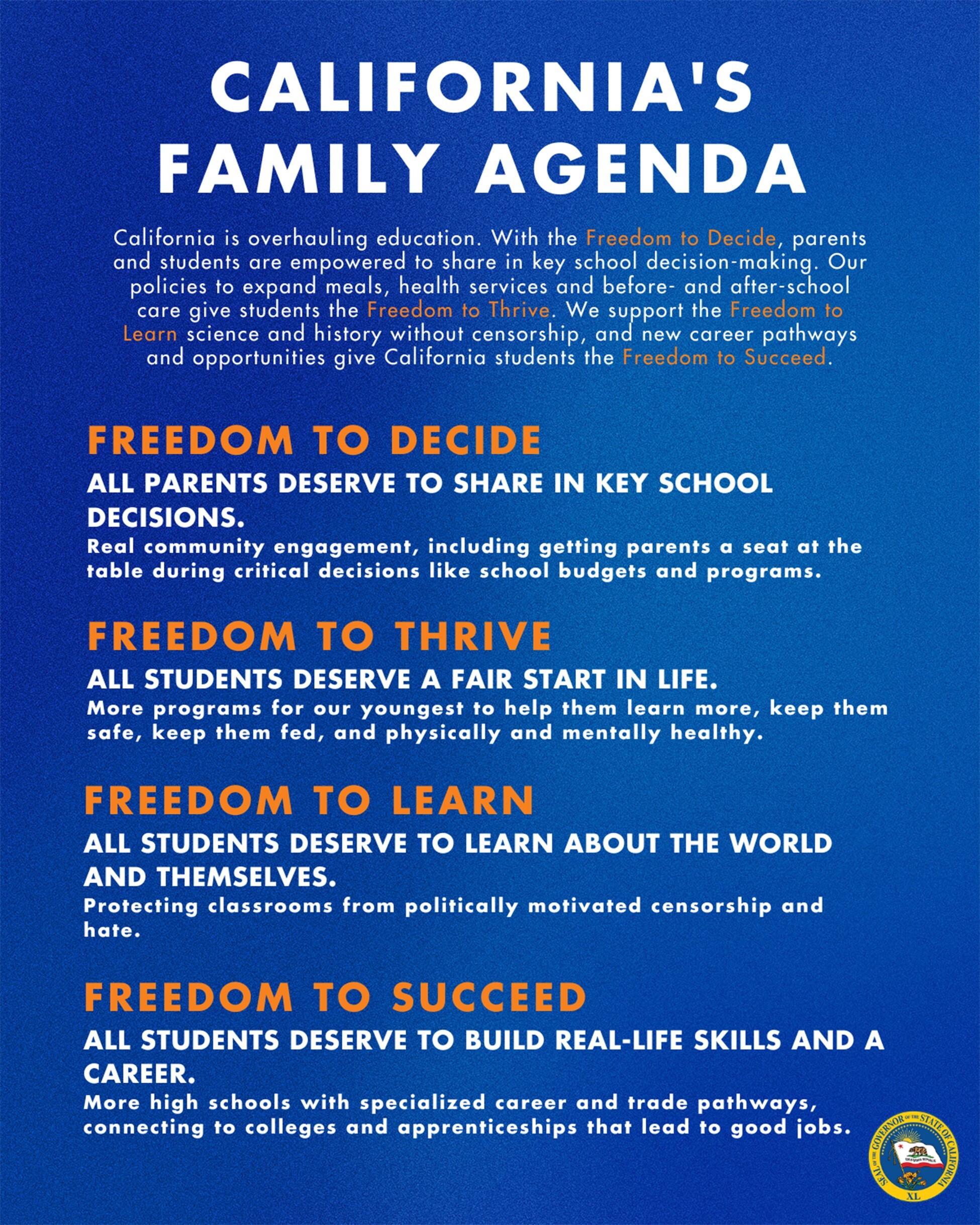Elk Grove, CA…As other states censor curriculum and demean staff and students, California is empowering parents and students and transforming our education system to ensure all kids have the opportunity to succeed. Aug. 14, at Miwok Village Elementary School in Elk Grove, Governor Gavin Newsom and First Partner Jennifer Siebel Newsom highlighted California’s family agenda to ensure all kids can access a quality education, be safe on campus, get healthy meals and mental health care, have the freedom to read books and learn history, and ensure parents have the right to actively participate in their child’s learning.
WHAT GOVERNOR NEWSOM SAID: “While states across our country attack academic freedom, California is leading on parental choice and participation, creating a place where every student has a chance to thrive and every family has access to an education system that fosters opportunity. In California, parents have the right to actively participate in their child’s learning, and we’re transforming education so all students can learn on a safe campus where they can receive quality education, healthy meals, mental health care, and have the freedom to learn without political censorship.”
“At a time when other states are limiting children’s ability to reach their full potential through politically-motivated book bans, racist and reductive history curriculums, and the closing of school libraries, we are focusing on the needs of the whole child and family,” said First Partner Siebel Newsom. “California’s family agenda ensures kids have the opportunity and environment in which to thrive, learn, and succeed.”
From Cradle to Career, California’s Family Agenda is Transforming Public Education:
Freedom to Decide: All parents deserve to share in key school decisions.
Freedom to Thrive: All students deserve a fair start in life.
Freedom to Learn: All students deserve to learn about the world and themselves.
Freedom to Succeed: All students deserve to build real-life skills and a career.
California is ensuring parents and caregivers have the opportunity to actively participate in their kids’ education. Parents co-create Local Control and Accountability Plans with teachers and administrators, sharing a seat at the decision-making table for key budget, programmatic, and curricular decisions. In the past two years, Governor Newsom has required schools to make it easier for working parents to participate in school decisions, invested $4.1 billion to convert one in four schools into community schools with deeper parent engagement, and invested another $100 million in the Community Engagement Initiative for more proactive collaboration with parents.
California’s Public Education Transformation Investments:
Community Schools: Through California’s $4.1 billion community schools investment, parents and students throughout California have more access to schools that provide high-quality instruction and culturally competent wraparound services, including mental health support, tutoring, nutrition programs, free school meals, health care, counseling and other social assistance.
Universal Transitional-Kindergarten: California’s children will have access to crucial high-quality instruction by age 4 – effectively adding a new grade to the traditional K-12 system – regardless of a family’s income, with full-scale implementation anticipated by 2025.
Expanded Before and After School Programs: All elementary school students will have access to before- and after-school programs, as well as summer learning opportunities, by 2025, reducing childcare costs for parents and giving kids a safe space to thrive.
Universal Free Meals: No student needs to learn on an empty stomach, with all students having the choice of two free, nutritious meals per day – regardless of income or family status.
Youth Behavioral Health: Youth ages 0-25 will have access to a revamped youth behavioral health system, including an online one-stop hub and billions invested to integrate mental health services with schools.
Career Savings Accounts: Every low-income public school student will have an account opened in their name with a seed deposit of $500 to $1,500 – building generational wealth, promoting college and career affordability, and developing financial literacy.
Tutoring + Literacy + Math: Schools will help students accelerate academic progress and mitigate learning loss with more than $8 billion invested in tutoring, increased instructional time, and other student supports.
More Teachers, More Counselors, and More Paraeducators: Lower staff-to-student ratios means more support for students. Ratios will be lowered across settings and $1.1 billion in annual funding for high-poverty schools to hire up to 5 more staff each.
###



